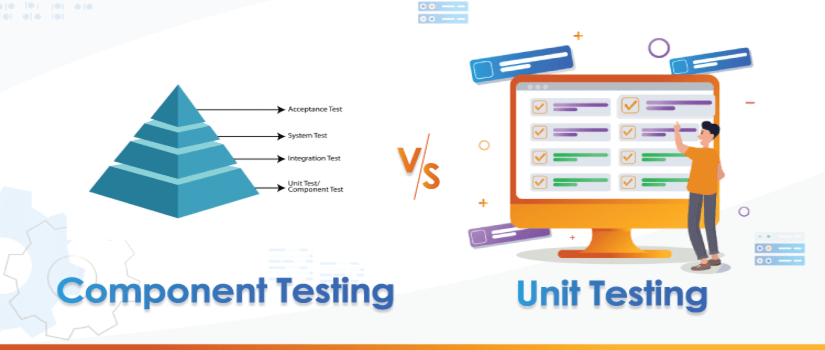Is there an ideal software development? Can someone achieve perfection in a software development project? There is no such thing as perfection however, by following best standard practices the process of software development, if not ideal, can still be less problematic and more geared towards a smooth development cycle.
Simple & Clean
Keeping your code as simple and clean as you can is the first step to keep in mind. Good software development results in simple code. Avoid writing complex code. A simple code has less bugs and it is obvious that it requires less time to debug fewer bugs. It is easier to understand for everyone that code should only do what it is supposed to do without tons of unnecessary abstraction to it. Any software should be developed in an efficient way avoiding the unnecessary complexities. A thought stating “Simple answers are usually more correct” goes perfectly with the needs of a development process. Simplicity syncs with some of the minor coding principles such as Don’t Repeat Yourself (DRY) or You Aren’t Gonna Need It (YAGNI).
Testing
We are all aware of Software Development & Testing associated with it. Unit Testing, Integration testing, System testing, and Acceptance testing are the four basic fundamentals of test criteria. These are the four levels of testing for software that goes under development. These fall under functional testing. The nonfunctional testing covers performance, load, stress, volume, security, compatibility, install, recovery, reliability, and compliance aspects. In order to ensure the best quality-driven development, the implementation of end to end testing is a must. Continuously testing from end to end will eliminate the chances of error, ensures the components are working together, and is the best practice to be followed.
Consistency
During a software development cycle, a consistent style with your codebase is recommended. Good software design will have high cohesion. There are many tools to ensure or implement a consistent style of coding. If there is a codebase and one can differentiate between code writers and can identify who wrote a specific file, then it is not considered as consistent or coherent. Keeping it consistent across your development team constitutes one of the best practices of software development.
Teamwork is very important for big projects and the whole code needs to have a same style which can help the team members to test, edit, or continue the work of each other. The projects that have no harmony can confuse the team and slow down the development process. Here are some of the tools for you to consider in order to ensure a single style:
• Editorconfig: A system that helps in maintaining consistent coding styles across various editors and IDEs;
• JSCS: A JavaScript code style checker for linting and formatting;
• ESLint: A highly customizable code analysis tool based on JavaScript for identifying problematic patterns;
• HTML Tidy: A tool for checking and cleaning up HTML source files;
• Stylelint: A modern CSS linter that enforces consistent conventions and avoid errors in the stylesheets.
Code Review
Code Review or Peer review is the best way to ensure software quality at each step of a software development cycle. There shouldn’t be any resistance in showing your code to your peers who can check your written code. It is an old, simple and easy to execute method. It helps to find errors or mistakes that may have been overlooked in the initial development phase. It helps to improve the overall quality of software and it also brings excellence to the skills of a developer. There are many Code Review methods that can be practiced like sharing the Email Thread, Pair Programming, and Over The Shoulder.
Estimation
Time & Budget estimate is one of the most important aspect of any software development project. Projects that are under budget coupled with aggressive timelines can bring a lot of strain on the Development teams. This factor should be given a lot of attention prior to getting into the development phase. It also affects the quality if the timelines and financial components are not in sync with deliverables. It is hard to find the balance between timelines, financial estimates, and harmony amongst development teams. This factor is multifaceted and the grip on this comes with experience. Thanks to Agile methodology which has simplified the software development process and encourages the parties to conduct the development of software in small sprints or modules. That better caters to timelines and commercials.
Maintenance
Software has a potential to be immortal, unlike the physical entities. And only good maintenance can ensure it which includes regular updates, tests, and analysis. The main aim of this exercise is to correct the issues and improve the performance. Just like any automobile, software applications need timely maintenance too to make sure they keep on running smoothly.
Software Development Service maintenance must be performed to fix the faults, improve the design, implement enhancements, interface with other systems, and accommodate different technology, and current trends. For instance, with the new products/devices coming in the market every now and then, software can raise alerts about not being compatible with certain devices which will require elaborate maintenance. It could seem a waste of time to make the software compatible with everything but you should focus on maintaining fresh code to allow the software work with new devices which will meet the needs of more customers and will help in staying ahead in the market.
Above-mentioned approaches aside, there are some other minor principles that if considered could result in a successful development and deployment. Here are a few that could be taken into account:
• YAGNI: “You Aren’t Gonna Need It”. Don’t write the code for the future purpose, that is not needed yet. It is an imaginary thing which will either become dead or will need rewriting as the future use case always turns out to be different.
• Accuracy over Speed: It is easier to speed up the processes than writing everything again so the focus should be on correct code rather than on fast code.
• Agile: This methodology involves constant testing and result evaluation, based on several development iterations, that can help in optimizing the work.
• DRY: “Don’t Repeat Yourself”. It matters a lot in production code. It aims at the reduction of repetitive information. Every piece of logic or knowledge must have a single unambiguous representation within the system, otherwise, writing the same code again and again will be difficult to manage and if the logic changes then it will need to be changed in all places wasting everyone’s time.
• Repositories: They help in tracking the versions, move back to old iterations, work synchronization, and merging. Git is one of the platform for that.
• Save Time: You can save time through various ways. One of the many is, don’t test the browser or external libraries unless you really need to. Test only your own code, not other’s. Another one is realizing that the code is the enemy and could go wrong and needs maintenance. So write less code, delete code, and don’t write the one you don’t need.
• Experience Sharing: If possible, exchange ideas and results among other developers to get external reviews.
Conclusion:
Each software development opportunity comes with its own challenges and limitations. There is no such ideal thing in the software development world. However, by following best practices the chance of getting close to perfection gets bright.
At Soft Tech, best practices are followed when it comes to software development work. Please feel free to Contact us for your development needs.











